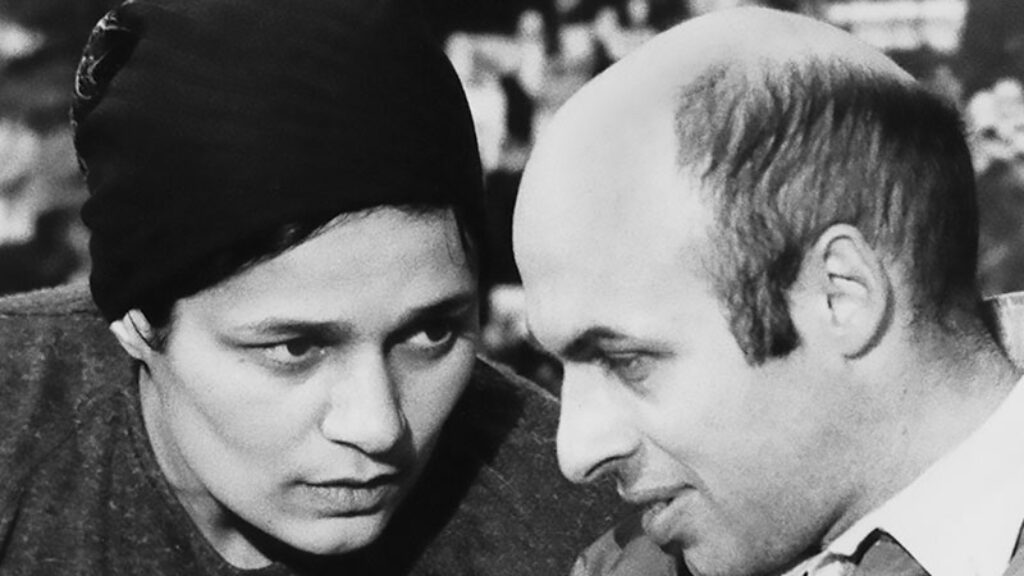The Child Was Circumcised
This summer, some Berliners wore shirts that proudly proclaimed Wir Sind Beschnitten (We are circumcised). The question of ritual circumcision, which had been a persistent subject of debate in 19th– and 20th-century Germany, was back, though few of the activists, litigants, jurists, politicians, and pundits seemed to know much of its history.
The current controversy over the ancient practice began in Cologne in 2010, when Muslim parents in that city brought their 4-year old, who was bleeding two days after his circumcision, into the hospital. Hospital officials notified the local police, and charges were brought against the physician who had performed the procedure. Recognizing that the parents had given their consent, the lower district court cleared the doctor of any wrongdoing. Nonetheless, the court expressed deep discomfort with the rite, criticizing both the absence of a medical justification for removing the youngster’s foreskin and the physical harm the operation allegedly caused. Although the boy had recovered, the prosecutor appealed and, in May 2012, the Cologne appellate court criminalized the non-medical circumcision of children. While finding that the doctor was innocent because of the legal uncertainty at the time of the circumcision, it ruled non-medical circumcisions were a form of bodily injury. Circumcision, the verdict stated, “should be considered bodily harm if it is performed on a boy who is unable to give his own consent.” According to the ruling, neither the constitutional freedom of religion nor the rights of parents could justify non-medical circumcision.
Since then, the verdict has reverberated beyond both the area of the court’s regional jurisdiction and the Muslim community. In Northern Bavaria, a physician filed a criminal complaint against a local Jewish mohel (ritual circumciser) for allegedly performing circumcisions in violation of the Cologne appellate court ruling. In Berlin, a prosecutor filed charges against Rabbi Yitzhak Ehrenberg for disturbing the peace when the rabbi publicly promised to continue conducting ritual circumcisions. (The charges against Ehrenberg have been dropped, but the case against the Bavarian mohel is still pending.) Even more dramatically, the Berlin Jewish Hospital ceased performing ritual circumcisions. Despite the fact that the Cologne court’s legal jurisdiction fell well short of the capital city, hospital officials worried that it was opening itself up to potential lawsuits and even criminal prosecution.
In response, the Berlin state senate authorized physicians—though not mohelim—to perform the procedure as long as parents consented in writing that they were aware of the medical risks. But the issue had clearly become national and Chancellor Angela Merkel’s government stepped in with a statement:
For everyone in the government it is absolutely clear that we want to have Jewish and Muslim religious life in Germany . . . Circumcision carried out in a responsible manner must be possible in this country without punishment.
Members of the German parliament approved a resolution in July calling on the government to ensure legal rights for circumcisers. The following month, President Shimon Peres publicly appealed to his German counterpart President Joachim Gauck to safeguard the right to circumcise one’s child.
Meanwhile, supporters and detractors not only wore shirts, but also wrote editorials, held public meetings, spoke on radio and television shows, and coordinated rallies. The German Academy for Child and Youth Medicine, the German Association for Pediatric Surgery, and the Professional Association of Child and Youth Physicians all published statements against non-medical circumcision. Germany’s Central Council of Jews and the Central Council of Muslims each responded, insisting that “religious freedom is very important in our constitution” and that the rite of circumcision was crucial to religious identity and belief. “Do you still want us Jews?” asked Charlotte Knobloch, the former president of the Central Council of Jews in Germany in a furious Süddeutsche Zeitung editorial. In late September, the Ministry of Justice issued a proposal that legalized ritual circumcisions if performed by a medical professional. On October 10, the federal cabinet approved the bill, which now will be introduced to the Bundestag, Germany’s national parliament.
But even as the German government moved to neutralize the Cologne court’s decision, similar deliberations unfolded in other parts of Europe. Denmark’s government authorized an investigation into whether non-medical circumcision violated its health code. And in both Zurich, Switzerland, and Austria’s Vorarlberg province some hospitals suspended non-medical circumcisions.
Although Chancellor Merkel’s government has Germany’s “unmasterable” anti-Semitic and Nazi past very much in mind, the actual history of German debates over circumcision seem to have been forgotten. And yet in the century between 1840 and 1939, circumcision was often the subject of vigorous public debate involving German-speaking Jews and non-Jews from different geographical areas and professional, political, and religious orientations. The 19th– and early 20th-century discussions invoked both cultural anxiety and medical concerns about public health, disease, and sexuality, and they prompted weighty considerations of the limits of religious toleration and the state’s obligation to protect the public’s health. And, of course, questions of cultural and religious difference were never far from the surface.
Supporters of the ritual often described circumcision as a prophylactic procedure, arguing that it prevented some men’s health problems, as well as sexually transmitted disease. Detractors described it as sexual disfigurement and blamed it for cases of syphilis, the spread of gonorrhea, and the tendency of boys to masturbate. According to Eugen Levit, a 19th-century Jewish physician who opposed the rite, circumcision threatened to “torture and disfigure thousands of innocent creatures.” It was a “barbaric custom of our nation.”
Critics further charged that circumcisers inflicted pain on infants, spread contagion, and reinforced supposed Jewish brutality through their cruel actions. These portrayals emphasized the power imbalance between “innocent creatures” and their “cruel” tormentors. Some critics also paid particular attention to the waning practice of metzitzah be-peh, the traditional use of oral suction to remove impurities from the wound (a hygienic issue that, as it happens, is currently being debated in New York, though it hasn’t been part of the current German controversy). Others focused on the lack of medical training of the practitioners and the medical impact of removing the foreskin.
An odd fusion of biology, bacteriology, eugenics, sexology, and social Darwinism informed the arguments of both the opponents and the defenders of mohelim. Defenders insisted that mohelim were reputable, trusted communal servants and medical professionals. It was not surprising, then, that the first set of regulations in the German states concerning circumcision focused on the practitioner. Municipal governments insisted that they were responsible for training and licensing such ritual practitioners. In some cases, the city generated a list of acceptable circumcisers in its Jewish community. The 1860 license issued to a certain Henry Minden of Hamburg, was typical. Minden took and passed a medical exam, which had been approved by the government. He then signed a document agreeing that he would comply with the city’s circumcision laws. The Jewish community secretary stamped the license and returned it to the Hamburg authorities, which then issued the final stamp of approval.
Of course, the old question of whether circumcision’s physical mark of difference prevented Jews from acculturating was always present in these debates. Several critics used the terms “deform” or “disfigure” (verunstalten) to describe the circumcision. They were apparently anxious that it had a metamorphosing effect, leaving a stigmatic mark on an otherwise “perfect” body. German anti-Semite Friedrich Lange argued that the statutes of his German League prohibited men who were born Jewish from joining the association precisely because circumcision had distorted their natures.
The 19th– and 20th-century circumcision debates also tapped into contemporary disputes concerning the liberty of a religious community to regulate itself and the place of religious toleration within the modern nation-state. German government officials and supporters of the rite recognized circumcision’s central place in Judaism, but, then as now, there was disagreement over whether this religious significance was sufficient to trump a state’s interest in regulation.
Finally, as anti-Semitic ideology, rhetoric, and imagery developed over the course of the late 19th and early 20th centuries, so too did the campaign against circumcision. Anti-Semitic authors, cartoonists, and pundits invoked the alleged brutality of circumcision, its supposedly bloody nature, its health risks, and its economic and political noxiousness. Circumcision came to stand for the supposed problems lurking within all Jewish ritual behavior, and even within Jews themselves.
The most radical anti-Semitic opponents of circumcision even invoked a new version of the Jewish blood libel: Circumcision was alleged to involve the eating of Jewish and Christian blood. In his retelling of the ritual, turn-of-the-century anti-Semite Bernardin Freimut imagined the mohel feeding the child a mixture of bodily fluids from the wound together with innocent Christian blood.
In the years between the defeat of World War I and the dissolution of the Weimar Republic, circumcision continued to attract attention. Medical researchers, anthropologists, psychoanalysts, and sexologists intensified their scrutiny of circumcision. So did anti-Semites, who continued to emphasize the bloody nature of the ritual. However, with the exception of the mandatory licensing of mohelim, little political or legal attention was paid to the rite. The Nazi propaganda machine portrayed circumcision as proof of Jewish deviance and cruelty, though, of course, its foot soldiers later found it useful as a means of identifying Jewish males.
Recent German discussions have steered clear of such explicit hate-mongering, though they do play on anxieties concerning brutality and violence. In other ways, participants in the debate seem to be unconsciously repeating the arguments of their historical predecessors. Holm Putzke, a professor of criminal law at the University of Passau in Germany and a key participant in the debates, seemed to be almost channeling Eugen Levit when he demanded that only adults be allowed to choose circumcisions for themselves. “What should be given more weight,” he asked, “religious freedom or the right of children not to have their genitals mutilated?” A reader of the earlier debates hears such echoes again and again in the present controversy.
But perhaps what is most striking are the differences. The earlier debates were spurred by both Jewish and anti-Semitic anxieties over Jewish particularity and it soon also became increasingly toxic as German anti-Semitism intensified. The present debate began with a Muslim circumcision, though, inevitably, it soon became a conversation about Jews and Judaism. Even more strikingly, no earlier opponents—not even the Nazis—argued for a national ban of circumcision outright, whereas the present debates actually raise at least the possibility that a—arguably the—central rite of Judaism (and Islam) might be outlawed.
Anti-Semitic episodes in Germany have been on the rise recently. In October, Wolfgang Thierse, vice president of the Bundestag and a member of the SPD (Germany’s Social Democratic Party), insisted that the German government devote increased time and resources to the fight against them. How much of the current campaign against circumcision is motivated by covert anti-Semitism? It is hard to say, since German criminal law bans the incitement of hatred against minorities. Knobloch certainly spoke for many of her co-religionists when she lamented, “for 60 years I have defended Germany as a survivor of the Shoah. Now I ask myself if that was right.”
If there are indeed anti-Semites among today’s German opponents of circumcision they are likely to see a new stamp the German postal service has issued as adding something like insult to injury. Released on September 11to commemorate the 200th anniversary of the German Bible Society, it features a passage from Luke 2:21 describing the circumcision of Jesus (das Kind beschnitten würde—the child was circumcised). While the stamp’s timing was coincidental, it nonetheless underlines the historical complexity that lies beneath the current debate, which will almost certainly reach a legal resolution, at least in Germany, when the Bundestag votes.
Suggested Reading
Seeds of Subversion
The "Other" Jewish tradition.

Saladin, a Knight, and a Jew Walk Onto a Stage
Outside of Germany, Nathan the Wise is one of those works more often read than performed, and more often read about than actually read.

Sharansky’s Exodus
Witnessing the modern exodus of Jews from Ethiopia to Israel—different than his own but no less stirring—reminded Sharansky of what he’d told himself in his darkest days in prison: “Your history did not begin with your birth or with the birth of the Soviet regime. You are continuing an exodus that began in Egypt. History is with you.”

Kidnapped!
When Ruth Blau met with Khomeini to secure the safety of Iranian Jews, it was only the latest extraordinary meeting for the fifty-seven year old Resistance spy turned convert turned kidnapper turned anti-Zionist turned Israeli agent.
Comments
You must log in to comment Log In